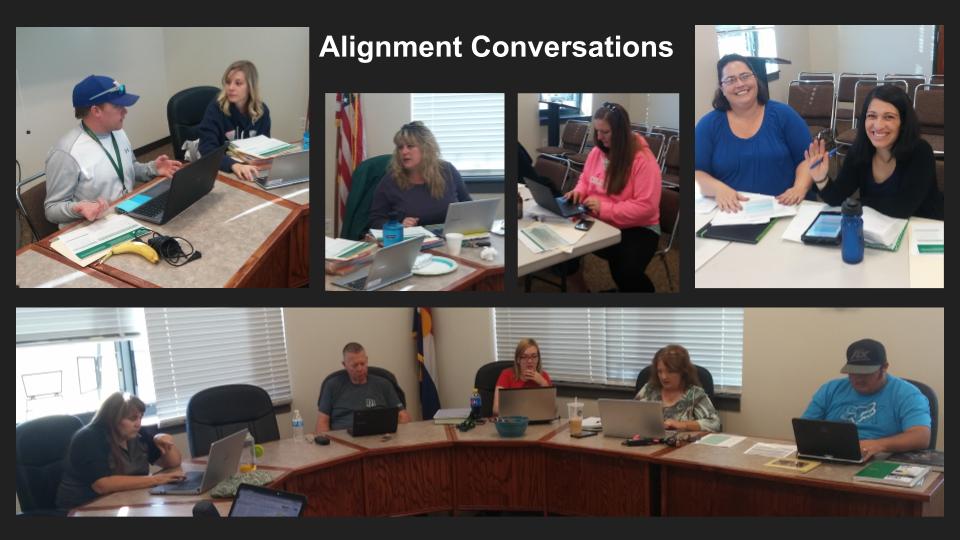3. Vertical Alignment Conversations
Vertical Alignment ensures that students experience a seamless flow in instructional content and math vocabulary as they progress through the district so they enter each grade with the skills and knowledge they need to master the learning expectations for that grade and leave that grade prepared for the next grade. It is important that teachers are aware of the grade level expectations for students in both the prior and next grade levels. The Vertical Alignment process contributed to this bigger picture view of student learning.
After rating the evidence outcomes and other standards descriptors for their own grade level, teachers then spent time with teachers from the prior and next grade level sharing and explaining their rankings. Conversations focused in particular on if the rankings seemed in line with the expectations at both the previous and next grade level. For example, if a sixth grade teacher had ranked a particular standard descriptor as less important because she or he believed it was mastered in the previous grade level but she or he learned through conversation that that particular skill was only introduced in the fifth grade standards then the teachers might agree it should be given more emphasis at sixth grade after all.
After rating the evidence outcomes and other standards descriptors for their own grade level, teachers then spent time with teachers from the prior and next grade level sharing and explaining their rankings. Conversations focused in particular on if the rankings seemed in line with the expectations at both the previous and next grade level. For example, if a sixth grade teacher had ranked a particular standard descriptor as less important because she or he believed it was mastered in the previous grade level but she or he learned through conversation that that particular skill was only introduced in the fifth grade standards then the teachers might agree it should be given more emphasis at sixth grade after all.
